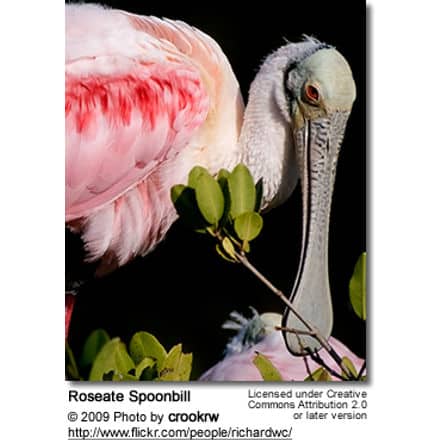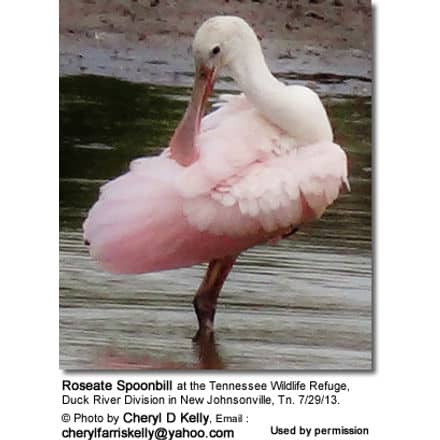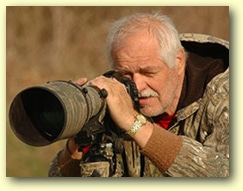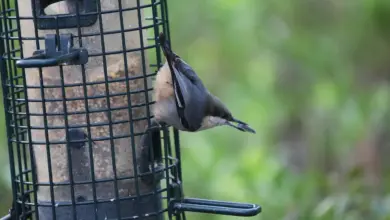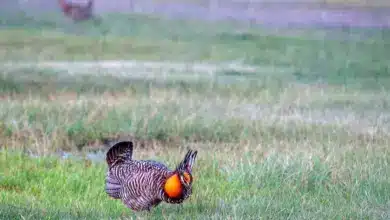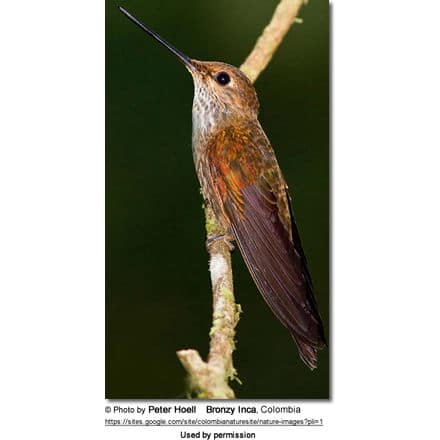Roseate Spoonbill (Platalea ajaja)
The Roseate Spoonbills (Platalea ajaja, sometimes separated in the monotypic genus Ajaia) is a gregarious wading bird of the ibis and spoonbill family, Threskiornithidae. In 2006, a banded bird 16 years old was discovered, making it the oldest known individual in the wild.
Distribution / Breeding:
It is a resident breeder in South America mostly east of the Andes, and in coastal regions of the Caribbean, Central America, Mexico, and the Gulf Coast of the United States.[1][2] Vagrant birds have been sighted as far north as Delaware, Indiana, and Kansas.
In the United States a popular and easy place to observe Roseate Spoonbills is at Ding Darling National Wildlife Refuge on Sanibel Island just off the west coast of Florida across a causeway connecting to Fort Myers.
Breeding / Nesting
The Roseate Spoonbill nests in shrubs or trees, often mangroves, laying 2 to 5 eggs, which are whitish with brown markings. Immature birds have white, feathered heads, and the pink of the plumage is paler. The bill is yellowish or pinkish. It does not usually share colonies with storks or herons.
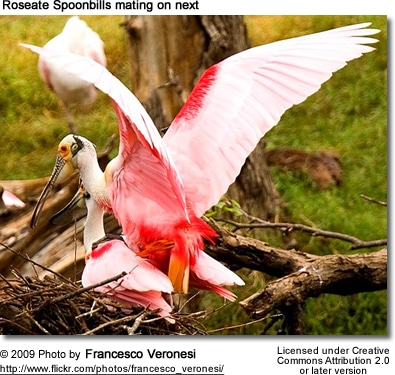
Description:
This species is unmistakable. It is 80 cm (31 in) tall, with a 120–130 cm (47–51 in) wingspan. It has long legs, a long neck, and a long, spatulate bill. Adults have a bare greenish head (“golden buff” when breeding) and a white neck, back, and breast (with a tuft of pink feathers in the center when breeding), and are otherwise a deep pink. The bill is grey.
Males and females look alike, but immature birds have white feathered heads and the pink of the plumage is paler. The bill is yellowish or pinkish.
Unlike herons,spoonbills fly with their necks outstretched. They alternate groups of stiff, shallow wingbeats with glides.
They are not very skittish and when feeding or bathing can often be observed within thirty to forty feet.
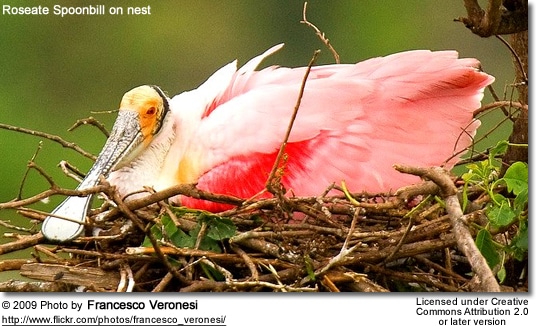
Diet / Feeding:
This species feeds in shallow fresh or coastal waters by swinging its bill from side to side as it steadily walks through the water, often in groups. It feeds on crustaceans, aquatic beetles and bugs, and very small fish bigger waders ignore. In the United States a popular and easy place to observe Roseate Spoonbills is “Ding” Darling National Wildlife Refuge in Florida.
Roseate Spoonbills sometimes feed near Snowy Egrets, Great Egrets, Tricolored Herons, and American White Pelicans. As spoonbills they feed in the shallow muck of ponds, marshes and rivers and do not try to catch free-swimming fish except the smallest, so they do not compete for the fish the other wading birds in general are fishing.
They are not very skittish and when feeding or bathing can often be observed from within thirty or forty feet.
Threats
There is no information about predation on adults. Nestlings are sometimes killed by Turkey Vultures (which can kill even healthy nestlings), Bald Eagles, Raccoons, and Fire Ants. In 2006, a banded bird 16 years old was discovered, making it the oldest known individual in the wild.
References
- “Roseate Spoonbill”. Waterbird Conservation. National Audubon Society. http://web1.audubon.org. Retrieved 2009-07-23.
- Dumas, Jeannette V. 2000. Roseate Spoonbill (Platalea ajaja), The Birds of North America Online (A. Poole, Ed.). Ithaca: Cornell Lab of Ornithology. Retrieved 2009-11-12. Subscription required}}
- http://www.delawareonline.com
- [http://www.wishtv.com Jay Hermacinski, “Rare bird spotted near Bloomington”, wishtv.com, Thursday, 25 Jun 2009.]
- “BIRDERS TICKLED PINK AT SIGHT OF SPOONBILLS”, Wichita Eagle, August 30, 2001.
- Howell, Steve N. G.; Webb, Sophie (1995), A Guide to the Birds of Mexico and Northern Central America, Oxford University Press, pp. 147–148, ISBN 0-19-854012-4
- http://www.care2.com

